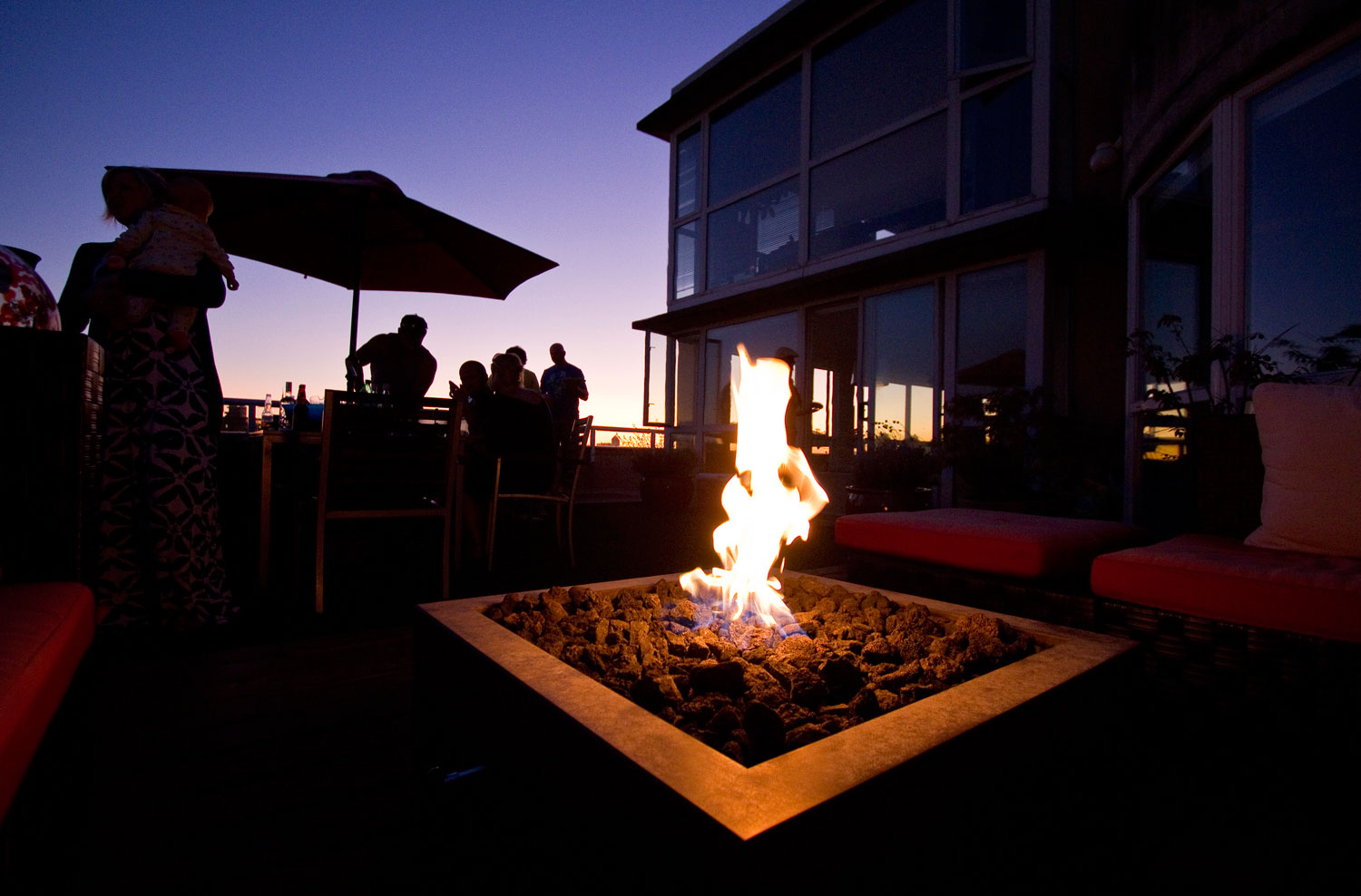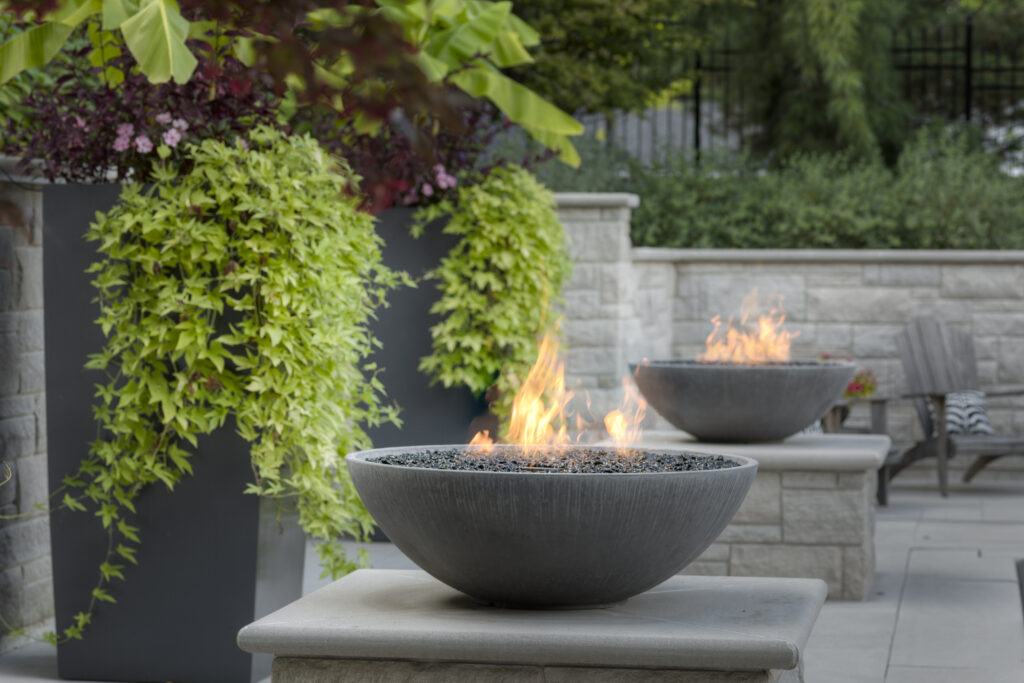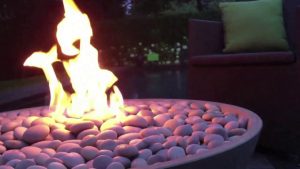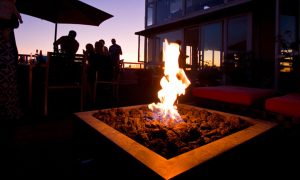Now that spring is officially in the air, I offer some practical and design considerations for incorporating fireplaces and fire pits into outdoor rooms or landscaping. Part 1 is the practical differences.
With the growing popularity of designed outdoor rooms, more and more people are adding outdoor kitchens, lounges, and outdoor fire features to their homes. Whether cottaging in Georgian Bay, Ontario, or dining on an urban terrace in downtown Toronto, there is no better way to bring warmth and coziness outside than with an outdoor fireplace or fire pit. While the basic concept of outdoor fireplaces and fire pits is the same – safely bring fire to your outdoor space – the design, practical considerations, and overall effect are quite different.

Outdoor fireplaces are pretty much what the name suggests: fireplaces like you might find indoors, designed and built in a way that can withstand and function when exposed to the elements. You will find most of the characteristics of indoor fireplaces in their outdoor counterparts: a firebox of some sort to contain the flames and radiate heat and a chimney or vent to direct smoke or other byproducts of burning. They can be as raw as masonry structures in which wood is burned or as technologically advanced as stainless steel versions of the high-efficiency gas fireplaces found in many modern homes. These often incorporate glass enclosures to protect the fire from wind and to ensure a clean, efficient, and consistent burn. The glass may also serve the purpose of radiating heat, which is far more effective in outdoor applications than blowers. This being said outdoor fireplaces are really less for heating and more for comfort and ambiance.
Outdoor fire pits have evolved from campfires. But in modern outdoor rooms where it is often too messy and unpredictable to have a wood-burning bonfire (not to mention illegal in many municipalities), natural gas, propane, and even ethanol fire pits are now the fires of choice. Gas fire pits are seldom found indoors as their ‘open fire’ aesthetic cannot be safely incorporated in enclosed spaces without very careful (and usually custom-built) solutions to ventilation and air exchange. In concept, fire pits are quite simple: a container and a burner. The container is usually a raised vessel or, as the name suggests, a pit or hole in the ground. Outdoor fire pit burners are usually constructed of stainless steel and are designed to create an aesthetically pleasing flame that creates a specified amount of heat (BTUs) and will not be blown out by the wind. Again, the goal is to safely contain a fire in a weather-resistant enclosure.
As with living rooms, fireplaces and fire pits can be dramatic focal points for outdoor rooms and create natural gathering spots for entertaining and conversation. With current technology and the availability of clean-burning fuels, incorporating one into an outdoor space is relatively easy. In Part 2, I will discuss the aesthetic differences between outdoor fireplaces and fire pits and the considerations one should make when designing around one.
















